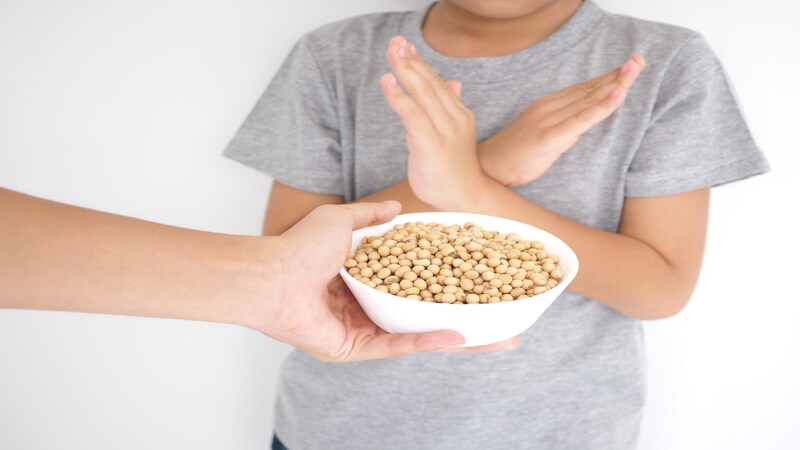 Children are more prone to different types of allergies. Food allergies are the most common types of allergies found among children. These allergies mostly surface when baby starts to take solid foods after the breastfeeding phase. Many foods can cause an allergic reaction among children. Studies also show that the food allergies in children are now increasing around the world. Among the food allergies, one of Types Of Soy Allergy In Children the most commonly found allergy is soy allergy. About 0.4 % of children are found to be allergic to soy. Continue reading to know more about the types of soy allergy in children.
Children are more prone to different types of allergies. Food allergies are the most common types of allergies found among children. These allergies mostly surface when baby starts to take solid foods after the breastfeeding phase. Many foods can cause an allergic reaction among children. Studies also show that the food allergies in children are now increasing around the world. Among the food allergies, one of Types Of Soy Allergy In Children the most commonly found allergy is soy allergy. About 0.4 % of children are found to be allergic to soy. Continue reading to know more about the types of soy allergy in children.
- What is soy allergy in children?
- Does all soy products cause allergy?
- When is soy allergy detected in children?
- Symptoms of soy allergy in children
- 5 types of soy allergy in children
- Anaphylaxis – a life-threatening reaction
- Living with soy allergy
- Precautions while dealing with soy allergy in children
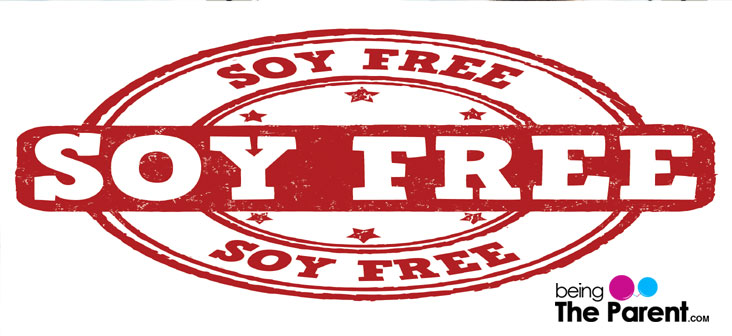
What Is Soy Allergy In Children?
Soy comes from soybeans which is a member of the legume family. The same family from which, peas, lentils, beans, etc. comes from. Some children develop an allergy to more than one kind of legume or some may develop an allergy to only soy. The child who develops an allergy to soy doesn’t necessarily means he has increased the chance of developing allergic to other members of the legume family, like the peanuts etc. Soy allergy happens when your baby’s immune system regards certain proteins found in soy as invaders that may be harmful to the body. Once your child’s immune system decides that soy protein is dangerous, it generates antibodies to fight against it. So the next time when your child eats or drinks any soy product, his immune system discharges substantial quantities of chemicals which also include histamine, in order to guard his body. This is when the soy allergy takes place.
Does All Soy Products Cause Allergy?
No. Not every soy product may cause soy allergy. Some soy foods that are fermented such as, shoyu (soya sauce), miso (a Japanese seasoning) and tempeh (an Indonesian soy product in which soybeans are bound into a cake form) are found to cause less allergy as compared to whole soybeans. This is because the process of fermentation partially breaks down the allergy causing proteins.
When Is Soy Allergy Detected In Children?
Once the baby starts to eat solid foods, most of the food allergies kick in. Soy allergy is mostly seen in babies and young children. It can happen at any age, but most commonly found among babies and children who are between 3 to 10 years of age.
Symptoms Of Soy Allergy In Children
Depending upon the kind of allergy and the amount of consumption of the allergen, the signs, and symptoms may vary from mild to severe. Sometimes the same child can react differently under various circumstances. Some children may start showing signs of soy allergy within minutes of consuming a food item containing soy or while it may take a longer time in some before the signs of soy allergy shows up. Some of the most widely recognized signs of soy allergies are:
- Fever with blister
- Breathing difficulty
- Wheezing
- Abdominal pain
- Diarrhea
- Nausea and vomiting
- Conjunctivitis
- Stomach aches
- Hives
- Drops in blood pressure
- Mouth may have tingling sensation
- Redness in the skin
- Swollen lips or face
5 Types Of Soy Allergy In Children
There are no less than 15 proteins in soybeans that have been found to bring about allergic reactions. There are five common types of soy allergies found among children:
1. Soy milk allergy:
Some babies develop an allergy towards soy milk. Actually, about half kids affected by cow’s milk allergy are also allergic to soy. The best part about soy milk allergy is that it will resolve once the child turns around 3 years old
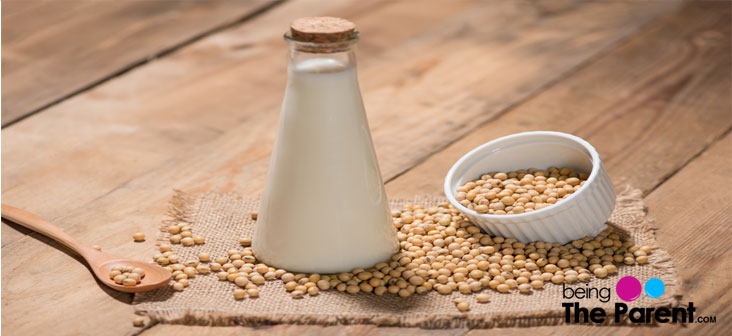
2. Soy lecithin allergy:
Soy Lecithin, a byproduct from soy, is one of the most widely used food additives on the market today and is non-toxic in nature. It is used in the production of foods that are in need of a natural emulsifier. Usually, it is used to increase the shelf life of some products. While frying certain foods, the oil splatters. This can be avoided with soy lecithin. Also, soy lecithin helps to avoid crystallization of sugar in chocolates. However, children who have soy allergy should steer clear of any food products that contain soy lecithin in them
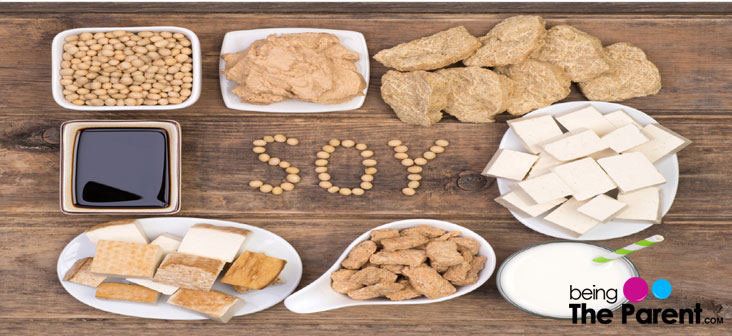
3. Allergy To Soy protein:
Soy consists of at least 21 different proteins that bring about asthma-related allergic reactions
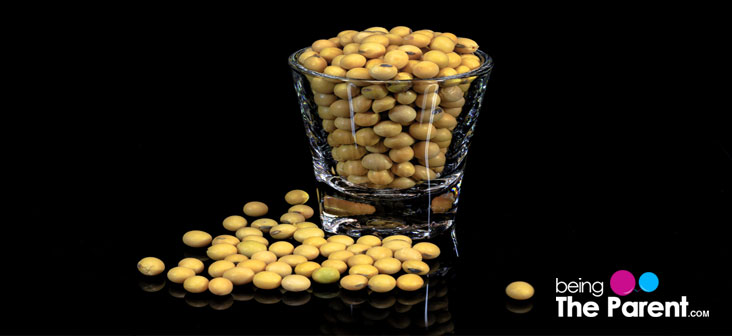
4. Soy oil allergy:
As compared to other things, soy oil is considered less allergic, as it contains low quantity of allergen proteins. It is very rare that children who consume fully refined soybean oil to show a severe allergic reaction. If the child belongs to that rare group, he or she will show the symptoms soon after having the food containing soy oil. So if your child is allergic to soy, it is advisable not to use soy oil for cooking food
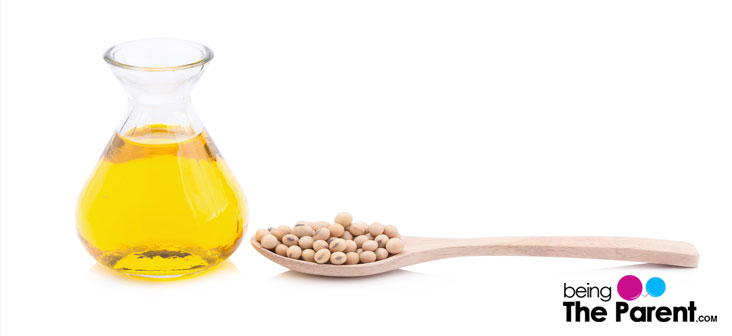
5. Soy sauce allergy:
Sauce made from soy can trigger an allergic reaction like inflammation of mouth and dermatitis. Soy sauce also contains histamines, which can cause histamine poisoning among children. Therefore, avoid it if your child is allergic to soy
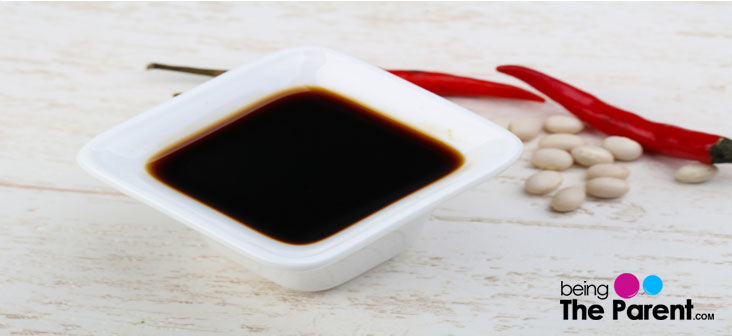
Anaphylaxis – A Life-Threatening Reaction
Very rarely, soy allergy in children can cause a severe reaction known as anaphylaxis. This usually begins with the same symptoms as a mild reaction, but can quickly worsen and lead to problems in children like breathing difficulties or the child may even pass out. If anaphylaxis is not treated, it can be life threatening.
Living With Soy Allergy
If your child has been diagnosed with soy allergy then you may need to completely avoid all the foods that contain any trace of soy in them. This can be a tough this to do as many processed foods have some amount of soy in them. If allergy testing shows that your child has a soy allergy, the doctor will provide guidelines on how to stay safe. So carefully read labels to check if the food contains soy before picking any packaged food from the shelves.
Precautions While Dealing With Soy Allergy In Children
Here are some precautions that you can take if your child is diagnosed with soy allergies:
- Avoid feeding your child food with unknown ingredients or something that you have not cooked
- When eating out make sure you mention to the restaurant staff or your relatives who prepare food that your child has soy allergy
- Try and make your child’s lunches and snacks at home only in order to have control over what you are feeding him
- Avoid going to restaurants if they reluctant about your request for a safe meal

1 Comment
Greetings! I’ve been following your web site for some time now and finally got the bravery to go ahead and give you a shout out from Dallas Texas! Just wanted to say keep up the fantastic work!